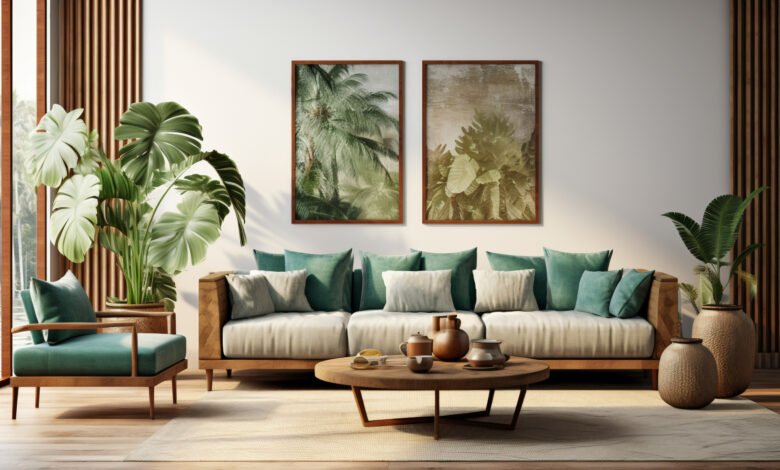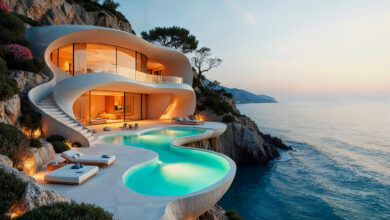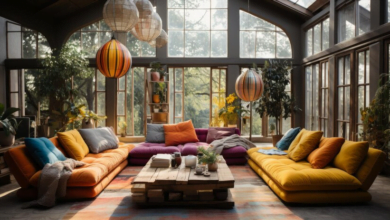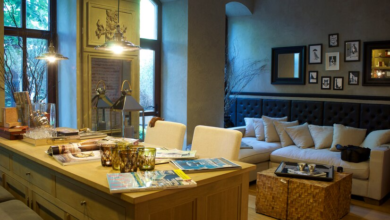Design Principles 2025: Unity and Variety in Interior Design

When you step into a space, you notice how colors, textures, and shapes harmonize like a symphony, yet each element adds its unique flavor to the ensemble. But do you know why you notice this? Simply because of unity and variety in interior design – two fundamental principles that shape the space this way.
Today, we’re focusing on understanding these principles and how they shape your interior the way you perceive it.
Unity: The Glue that Holds it All Together
Let’s kick things off by understanding the concept of unity. Achieving unity doesn’t mean every element has to match perfectly; rather, unity is when elements in a space are tied together in a cohesive flow to create a sense of balance, harmony, and continuity. Walking into a room where everything feels like it belongs together like pieces of a puzzle effortlessly put together into place is a sense of unity. It’s about establishing a theme, a mood, or a style throughout the room, guiding the eyes from one focal point to another.
How can we achieve unity?
One powerful way to achieve unity is through repetition – incorporating recurring patterns, shapes, or colors throughout the space. For example, echoing a particular color from your artwork in your throw pillows or using similar geometric patterns in your rug and curtains can keep the eye moving.
Start by selecting a carefully curated color palette and theme. Whether it’s a simple monochromatic scheme that soothes the soul or a vibrant punch of complementary hues that energize a space, the key is consistency. From furniture styles to architectural details, maintaining a constant aesthetic throughout the space reinforces the sense of cohesion.
Now, let’s sprinkle some spice into the mix of unity and variety in interior design.
Variety: Adding Spice to the Mix
Variety is the secret ingredient that prevents a space from feeling monotonous or predictable.
So, what is variety in interior design?
Variety makes spaces interesting and exciting through the use of different textures, varying patterns, and forms, or layering contrasting elements.
Now that we know what is variety in interior design, let’s look at how it can be achieved.
Variety in interior design can be achieved by using strong color contrasts, mixing eclectic furniture styles and shapes, using different types of materials, decorating with assorted accessories and artwork, or implementing diverse design styles to break up repeated patterns and create a focal point.
For example, pairing sleek, modern furniture with rustic, vintage accents, or combining smooth, glossy surfaces with rough, exposed finishes. This intriguing interplay of opposites creates a tension that keeps the eye engaged and invites exploration.

Striking the Balance: Harmony, Unity and Variety in Interior Design
Ah, so finally, here we find ourselves at the heart of it all- the delicate balance between harmony, unity and variety in interior design.
We all know that harmony in interior design is the coordination of all elements in the visual image to create a unified design scheme. Visual harmony can only be achieved through a right balance of unity and variety. The compatibility of these design principles can create a pleasing whole. The outcome of unity and variety balanced together in an orderly, agreeable composition can be put as:
Unity = Harmony
Variety = Contrast
Therefore, too much unity, and the space feels monotonous, dull, and stagnant. Too much variety and it risks creating chaotic, cluttered spaces. The key lies in finding the sweet spot where you have consistency and diversity in design; a strategic juxtaposition where unity provides a strong foundation for variety to shine, and variety infuses unity with personality and interest.
So, how can we harmonize unity and variety in interior design?
- Create a cohesive color palette as the foundation.
- Introduce variety through accent pieces, textures, and artwork.
- Experiment with different furniture styles while maintaining a cohesive theme.
- Aim for a balance between uniformity and uniqueness in design.
- Create visual focal points to draw attention.
- Play smart with lighting to highlight key features and create the desired ambiance.
- Correct scale and proportion of elements are key to ensure they complement each other.
- Integrate other natural elements like plants with organic materials including wood and stone design to bring balance.
- Incorporate asymmetry to add interest and break up monotony.
- Focus on the flow of the space and ensure smooth transitions between areas.
- Edit and simplify design elements to prevent overwhelming.
- Personalize the space with unique touches that reflect you.
Final Words
To conclude, remember this: your home is your canvas, and the principles of unity and variety in interior design are your paintbrushes. By mastering the art of balancing cohesion with diversity and creativity, watch your space come alive with beauty and character.
Source: Hatch Design



